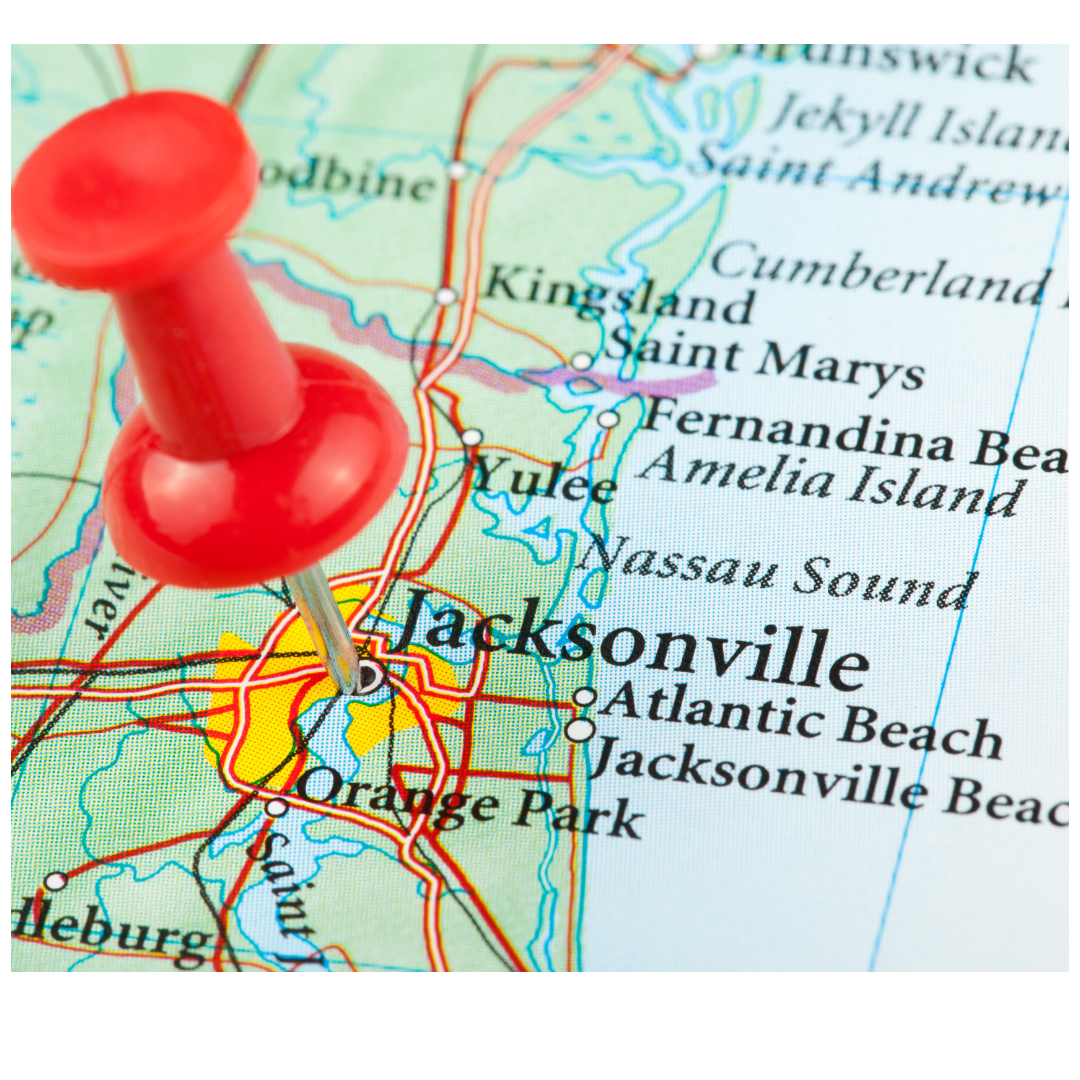Biggest Concerns about Jacksonville, Florida in the Next 10 Years

Jacksonville, Florida, renowned for its vibrant cultural tapestry and historical significance, is a city at a crossroads. Positioned strategically on the southeastern coast of the United States, its potential for economic growth is undeniable. With its rich history, diverse population, and stunning coastal scenery, Jacksonville stands as a microcosm of America. However, the coming decade presents a complex web of challenges that, if unaddressed, could hinder the city's trajectory toward becoming a more livable, equitable, and prosperous community.
1. Infrastructure and Transportation
As Jacksonville’s population continues to surge, the strain on its aging infrastructure becomes increasingly evident. The city's vast geographical spread, while a feature of its charm, has led to significant traffic congestion, particularly during peak commuting hours. Residents often spend a considerable amount of time stuck in traffic, which can decrease the quality of life due to frustration and loss of productivity. Additionally, the inadequacy of public transportation exacerbates the reliance on personal vehicles, creating additional environmental concerns related to emissions and urban sprawl.
Addressing these infrastructure woes requires a comprehensive, strategic investment in a robust transportation network that accommodates Jacksonville’s growing population. This may involve upgrading existing roadways and bridges to handle greater volumes of traffic while expanding public transportation options to provide residents with viable alternatives to driving. A forward-thinking approach could include implementing frequent bus services, developing light rail systems, and enhancing ferry services to connect various parts of the city. By addressing the transportation crisis, not only can Jacksonville ease congestion, but it can also promote economic activity by making commuting more efficient.
In addition to public transit enhancements, the development of dedicated bike lanes and pedestrian-friendly walking paths would encourage active transportation. This not only fosters healthier lifestyles but also could contribute to reducing the city’s traffic burdens and carbon footprint. Emphasizing smart urban planning that integrates green spaces with transportation networks will be crucial. Collaborating with transportation agencies and stakeholder communities is essential to innovate transportation solutions, such as ride-sharing programs and integrating technology into traffic management systems. By proactively addressing infrastructure challenges, Jacksonville can lay the groundwork for sustainable urban growth, supporting economic development while enhancing the quality of life for all residents.
2. Economic Inequality
Despite its potential for expansion, Jacksonville grapples with pronounced economic inequality hampering social cohesion. Wealth disparities are palpable, particularly in economically disadvantaged neighborhoods, where access to essential services such as education, healthcare, and job opportunities is severely limited. Many residents in these areas face systemic barriers that hinder upward mobility, perpetuating cycles of poverty and economic disenfranchisement.
To address these disparities effectively, the city must consider implementing inclusive growth strategies that actively engage marginalized communities. Initiatives such as targeted job training and workforce development programs can empower residents with the skills needed to secure employment in rapidly growing industries, such as technology and health services. Ensuring accessible education from early childhood to adult learning programs can help bridge the skills gap and create pathways out of poverty.
Affordable housing initiatives will be essential in creating equitable living conditions that allow families to thrive without the constant burden of oppressive costs. This could involve leveraging zoning reforms to promote the construction of mixed-income housing developments and collaborating with nonprofit organizations to support housing stability.
Moreover, collaboration between local government, businesses, and community organizations can amplify these efforts. Establishing public-private partnerships focused on economic development can yield job creation in underrepresented neighborhoods, stimulating local economies and fostering a more inclusive environment. To see real change, Jacksonville must approach economic inequality not merely as a statistical concern but as a pressing social imperative with far-reaching implications for its overall prosperity.
Also, providing financial literacy programs can equip residents with the tools necessary to manage their finances effectively, thereby enabling them to make informed decisions about saving, investing, and homeownership. Ultimately, these approaches aim to create a more equitable economy that supports all residents, allowing Jacksonville to realize its full potential.
3. Environmental Concerns
As a coastal city, Jacksonville is particularly vulnerable to the impacts of climate change, including rising sea levels and increased occurrences of severe weather events. The combination of urbanization and global warming places tremendous pressure on the city’s infrastructure and natural ecosystems. Flooding, exacerbated by tropical storms, hurricanes, and heavy rainfall, poses immediate challenges to residents’ safety and well-being, threatening homes, livelihoods, and health.
In response to these environmental threats, Jacksonville must prioritize investments in climate resilience and sustainable infrastructure. Strategies could include the implementation of advanced stormwater management systems that capture and divert excess rainwater, restoration of wetlands that act as natural buffers against flooding, and the establishment of parks and green spaces designed to absorb excess rainfall and provide recreational areas for communities.
Promoting responsible land use and enhancing building codes to withstand extreme weather events can also mitigate the risks posed by climate change. Developing resilient infrastructure not only protects the city from environmental threats but also supports economic growth by safeguarding public health and property values.
Public awareness campaigns will play a pivotal role in cultivating a culture of sustainability among residents. Educational programs that emphasize conservation practices, such as rainwater harvesting and community gardening, will resonate with the public and encourage collective action. Jacksonville can harness the power of community organizations, schools, and local businesses to foster a culture of environmental stewardship that recognizes the interconnectedness of health, the economy, and ecological sustainability. By promoting a partnership between the government and its citizens, they can cultivate a populace that actively participates in safeguarding natural resources while preparing for an uncertain future.
4. Crime and Safety
The challenge of crime has long been a concern for Jacksonville, particularly in certain neighborhoods that grapple with higher crime rates and social instability. Although recent initiatives in community policing and violence prevention programs have shown promise in fostering safer streets, a substantial amount of work remains to be done to ensure the security and well-being of all residents.
Enhancing public safety will require a multifaceted and holistic approach that addresses the root causes of crime, such as systemic poverty, lack of education, and limited economic opportunities. Comprehensive community engagement, which involves building mutual trust between law enforcement and residents, is critical to creating effective crime prevention strategies. Community policing models that prioritize dialogue and cooperation can facilitate relationships where residents feel empowered to communicate issues and collaborate with law enforcement.
Importantly, investment in crime prevention initiatives must prioritize educational outreach and youth engagement. Programs that promote recreational activities, mentorship, and vocational training can help to divert youth from the cycle of violence and crime, ultimately leading to safer communities. A focus on job creation and economic uplift can bolster opportunities for vulnerable populations, contributing to community resilience and trust.
Furthermore, leveraging technology to enhance safety measures can yield tangible benefits. Innovations such as integrating data analytics into police work can inform resource allocation, leading to a more strategic approach to crime prevention. Additionally, community-driven safety programs that empower residents to take an active role in ensuring their security—like neighborhood watches and community emergency response teams—can foster a culture of collective responsibility. By addressing crime comprehensively, Jacksonville can enhance its appeal to residents and businesses while investing in the well-being of its community.
5. Healthcare Access
Ensuring access to quality healthcare remains a colossal challenge for Jacksonville, particularly for low-income and underserved populations. Disparities in healthcare access undermine the social fabric of the community and may lead to larger public health crises if not addressed. The reality underscores the urgent need for equitable healthcare policies and the development of community-based health initiatives.
Strategies to improve healthcare access must prioritize the unique needs of vulnerable populations. This could involve expanding community health centers, increasing the availability of preventative care services, and providing robust support for mental health and substance abuse treatment. Increasing the number of bilingual healthcare professionals can also improve access for non-English-speaking residents, ensuring that everyone can receive appropriate care.
Moreover, partnering with local organizations to build outreach programs that inform residents about available healthcare services can bridge the gap between needed services and the communities that seek them. Making use of mobile clinics can also extend healthcare services to underserved areas, creating a more equitable landscape for health.
Investing in preventive care and health education will not only improve overall community health but also result in reduced healthcare costs over the long term. Integrating technological solutions such as telemedicine can significantly enhance access to healthcare, especially for those in remote or underserved areas, allowing them to consult with medical professionals without barriers related to transportation or mobility. As the city continues to grow, ensuring access to quality healthcare will remain a priority to build a healthier, more resilient community.
6. Housing Crisis
The rising cost of living in Jacksonville has led to a significant housing crisis, posing formidable challenges for low- and middle-income families who struggle to keep pace with escalating prices. As more people relocate to the city in search of job opportunities and a better quality of life, soaring housing prices risk excluding these families from the market entirely. This trend has severe implications for community stability, social cohesion, and ultimately, the city’s economic vitality.
To combat the housing crisis effectively, Jacksonville must implement comprehensive housing policies that promote diverse and attainable housing options. Collaboration between local government and real estate developers can facilitate the construction of mixed-income housing developments that cater to the diverse needs of the population. This could involve incentivizing developers to include affordable units in new projects or repurposing underutilized commercial spaces into affordable housing complexes.
Additionally, zoning reforms that allow for higher-density housing can help meet the growing demand and provide more choices for residents. By allowing duplexes, triplexes, and accessory dwelling units in residential areas, the city can diversify its housing stock and enable more families to find suitable living arrangements.
Furthermore, financial assistance programs for first-time homebuyers and rental assistance programs for those struggling to afford housing can provide critical support to vulnerable populations. Other initiatives, such as offering property tax relief for low-income families, can help ease the financial burden and promote homeownership. By prioritizing affordable housing initiatives and creating pathways for diverse communities to thrive, Jacksonville can cultivate a more inclusive environment that benefits all its residents.
Conclusion
In conclusion, while Jacksonville carries immense potential for growth and cultural flourishing, the pressing challenges outlined above must be met with deliberate and concerted action. Through targeted policies, partnerships, and collaborative efforts from all stakeholders—the government, community organizations, and residents—the city can tackle these issues head-on and emerge stronger in the face of adversity. The next decade will undoubtedly be pivotal for Jacksonville, and a collective commitment to addressing these challenges will play a crucial role in shaping a more resilient, inclusive, and prosperous future for the city and its residents.
By embracing innovative solutions, fostering a spirit of collaboration, and mobilizing community engagement, Jacksonville can realize its vision of becoming a vibrant urban center that truly reflects the diversity, values, and aspirations of all its citizens. Together, stakeholders can create a community that not only addresses the immediate needs of its population but also lays the foundation for sustainable growth, equity, and quality of life for generations to come. This vision underscores the importance of forward-thinking strategies in ensuring the long-term prosperity of one of Florida’s most dynamic cities.
